Rhode Island Has One Great Culinary Invention, And It’s Coffee Milk
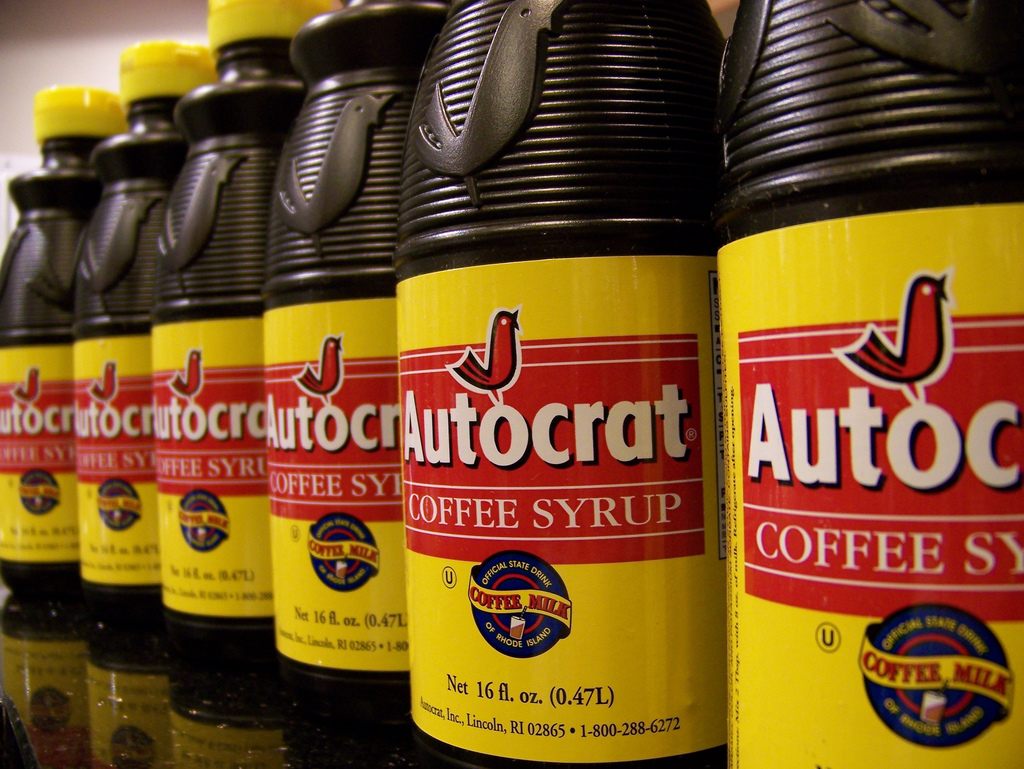
Autocrat coffee syrup, for blending with milk. (Photo: Sean Benham/flickr)
In 1993, coffee milk was declared the official state drink of Rhode Island and not everyone was thrilled. According to the Wall Street Journal, it was “to the great irritation of the state’s vocal frozen lemonade lobby.”
But those frozen lemonade lobbyists had to bow in the face of the mighty coffee milk—even if the rest of the country doesn’t know of its existence. The beverage is often referred to as weird and distinctly Rhode Island, something only locals understand and appreciate, and something they can’t even give away to tourists.

The appeal is pretty straightforward: It’s like the milkiest, sweetest latte you’ve ever had. It’s like somebody melted coffee ice cream and served it to you room temperature. It’s a non-alcoholic White Russian.
So where the hell did it come from?

Rhode Island, the home of coffee milk. (Photo: Taber Andrew Bain/flickr)
The concept of coffee milk is nearly universal. One of the earliest recipes for that phrase can be found in this 1808 cookbook, published in London, which calls for “coffee-powder” to be boiled in milk, and cleared with isinglass. A similar recipe was published in an American cookbook in 1823, which suggests it be served with “real Lisbon sugar of a good quality.” But coffee milk as we know it was most likely brought to America by southern European immigrants, not the English. And it’s also most likely not unique to Rhode Island.
In Rhode Island most people trace the beverage to the state’s Italian population. Between 1898 and 1932, over 55,000 Italians arrived at the port of Providence, mainly from southern Italy, to work for cheap in the state’s textile mills. And from Italy, they brought an appreciation for strong but milky coffee. “In Italy they often made a bitter coffee with grain. The brew was then heavily sweetened. The children drank what the parents did. The tradition of sweetening continued here,” wrote Nancy Verde Barr, author of We Called It Macaroni: An American Heritage of Southern Italian Cooking.
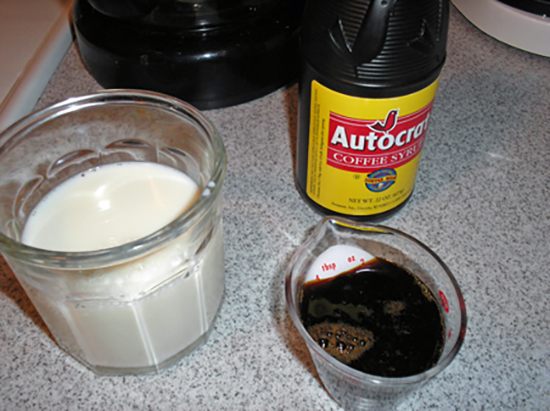
Ingredients for coffee milk… (Photo: Dtrap/WikiCommons CC BY-SA 3.0)
From there, it’s not hard to see how the trend spread. As more Italians came their traditions blended with those of everyone else in the state, and as the soda fountain and diner became common places to socialize, coffee milk moved from the home to the menu. By the 1920s, Eclipse began producing coffee syrup specifically for the beverage, and its cousin the Coffee Cabinet (the regional term for a milkshake), and by the 1930s was selling the syrup directly to consumers. In 1940, it was joined by competitor Autocrat, which would inspire fierce brand rivalries (that would end when they bought Eclipse in 1991). And though it was available elsewhere in New England (one 1954 study had 24 percent of students at the University of New Hampshire preferred coffee milk over both regular and chocolate), Rhode Island was its home.
It could just continue being a Rhode Island staple if it weren’t for one pesky anomaly—Louisiana coffee milk. “Many Louisiana families raised their children on coffee milk,” says Jodi Conachen of Community Coffee Company, the coffee brand most Louisianans point to as a necessary ingredient to their coffee milk, “Coffee milk can often be found even in baby bottles with the milk and sugar proportion very high and then the proportions adjust over time to include more coffee.” One Cajun writes the recipe for Louisiana coffee milk as four parts milk to one part Community Coffee, with a heap of sugar. It may not be made of syrup, but from a taste perspective it’s the exact same thing.
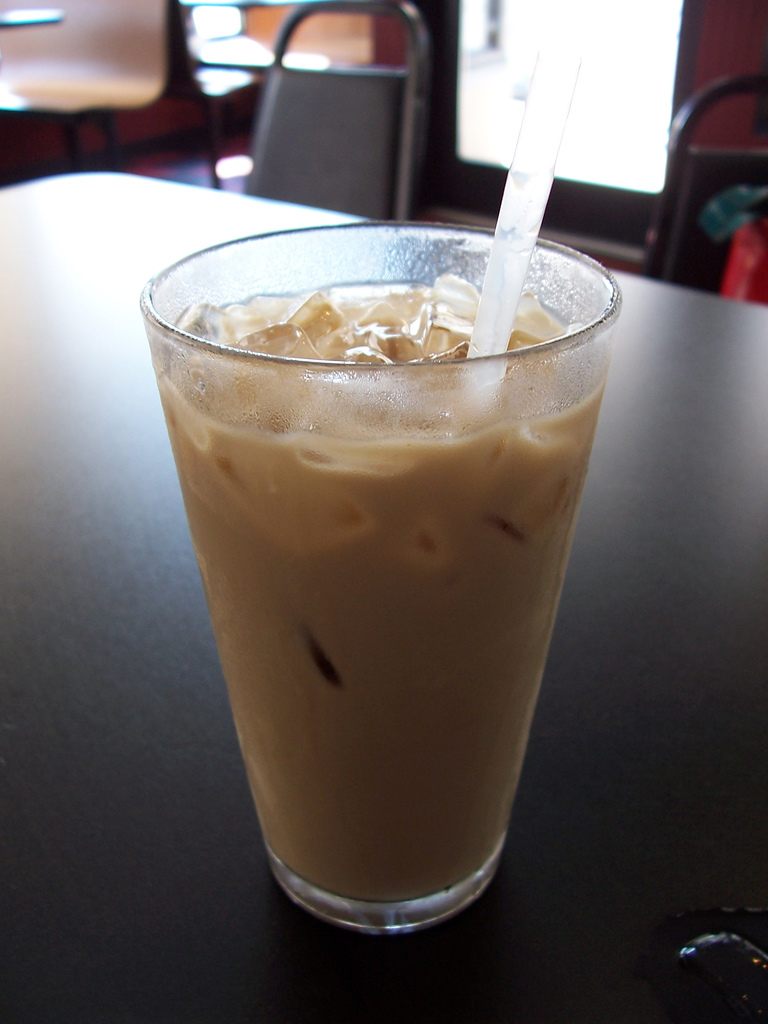
The finished product, chilled. (Photo: Sean Benham/flickr)
Community Coffee Company was founded in 1919 in Baton Rouge by Cap Saurage, who was of Cajun heritage, and indeed it seems Louisiana’s coffee milk tradition came from the Cajuns and French, not the Italians. (Even though Louisiana had a similar Italian immigration to Rhode Island—one ship line went straight from Palermo to New Orleans.) The Cajuns had strong coffee, often buttressed with chicory to save money, and flavoring it with milk and sugar was an easy way to stretch it even further.
Both Rhode Island’s and Louisiana’s coffee milk cultures have a lot in common. The French and Italians have cafe au lait and caffe latte, respectively, which certainly are the distant relatives of coffee milk. They also both have no qualms about serving the mixture to children. “Drinking coffee milk while your parents and relatives drank their regular coffee was like a sense of well…community,” wrote one Cajun author about the tradition. The syrup was really a formality on Rhode Island’s part, an easy way to mass-produce the treat outside of the family kitchen.
In Rhode Island, the love for coffee milk remains strong, perhaps stronger than in the South. Grocery stores are not only stocked with Autocrat and Eclipse, but smaller artisanal brands like Dave’s and Morning Glory keeping the tradition fresh for a new Rhode Island generation. The same can’t be said in Louisiana. “It is still practiced but not on the same scale that it once was throughout the area,” says Conachen.
Arguably, Rhode Island has held onto its coffee milk out of necessity. The state has a deep history and culture that is often overshadowed by the rest of the Northeast. Rhode Island was a colony, but there were 12 more of those. Rhode Island has incredible seafood, but so does the rest of New England. All the while, Louisiana has jazz, Sazeracs, po-boys and Jean Lafitte. Coffee milk is something Louisiana can afford to lose. Rhode Island can’t. As the number of truly regional quirks in this country get absorbed or forgotten, Rhode Island coffee milk is thankfully going strong. Even if it’s not the only state sipping it.
Gastro Obscura covers the world’s most wondrous food and drink.
Sign up for our regular newsletter.






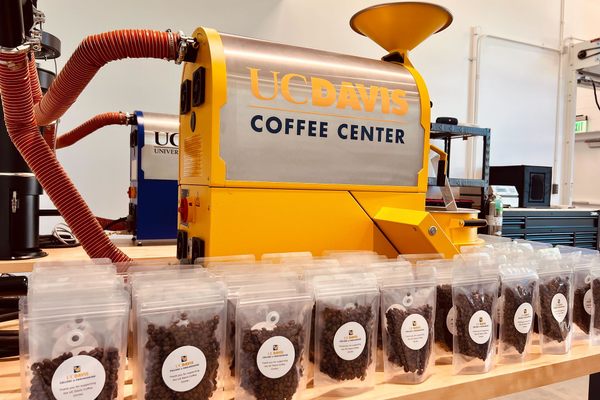














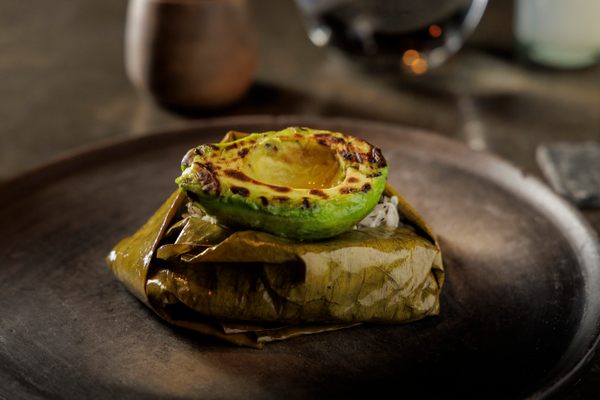


Follow us on Twitter to get the latest on the world's hidden wonders.
Like us on Facebook to get the latest on the world's hidden wonders.
Follow us on Twitter Like us on Facebook